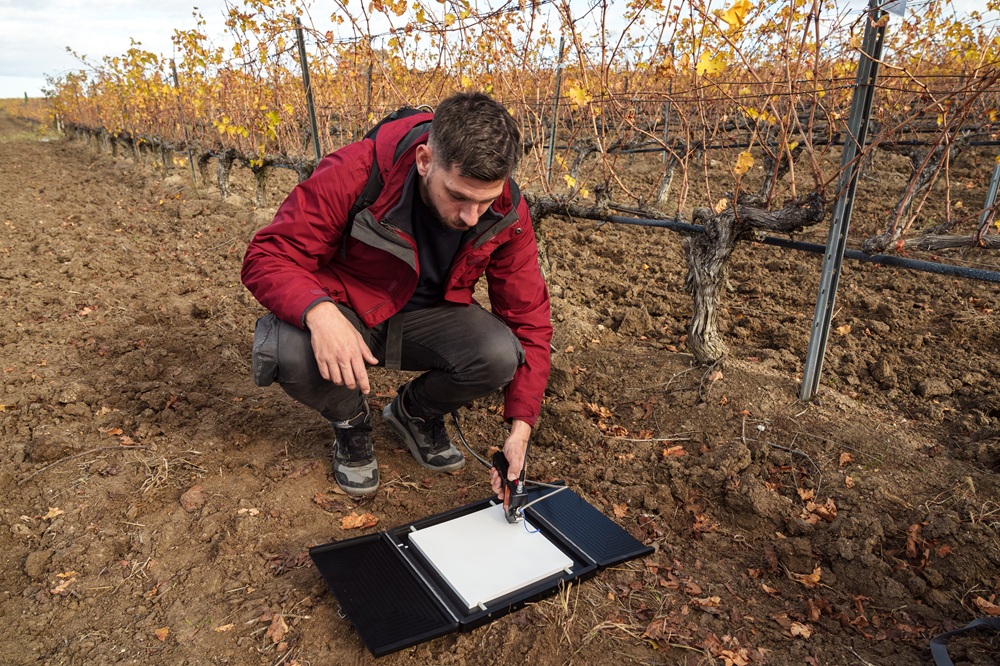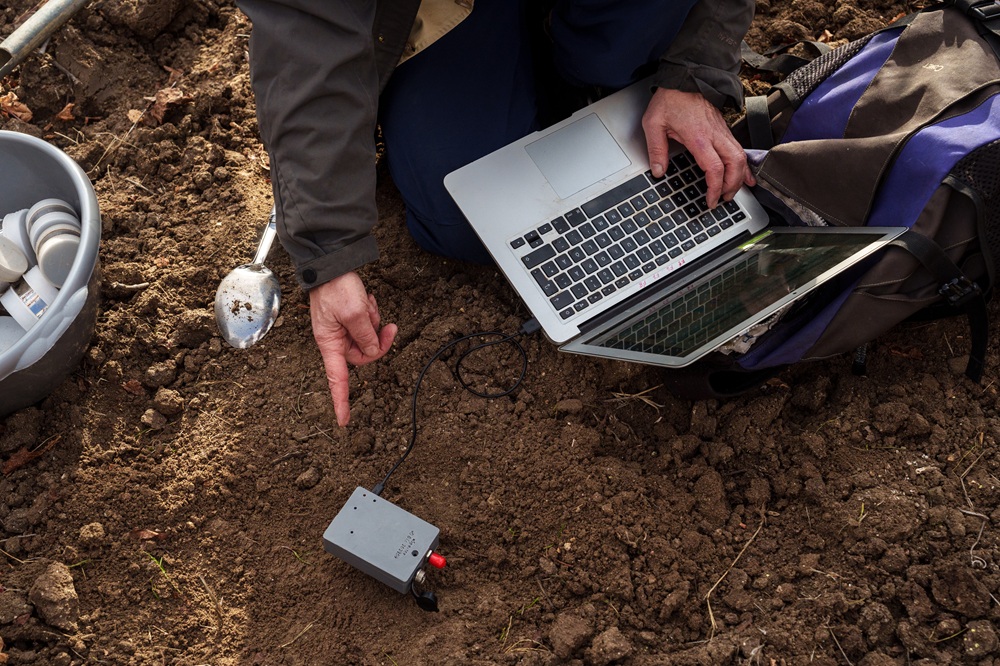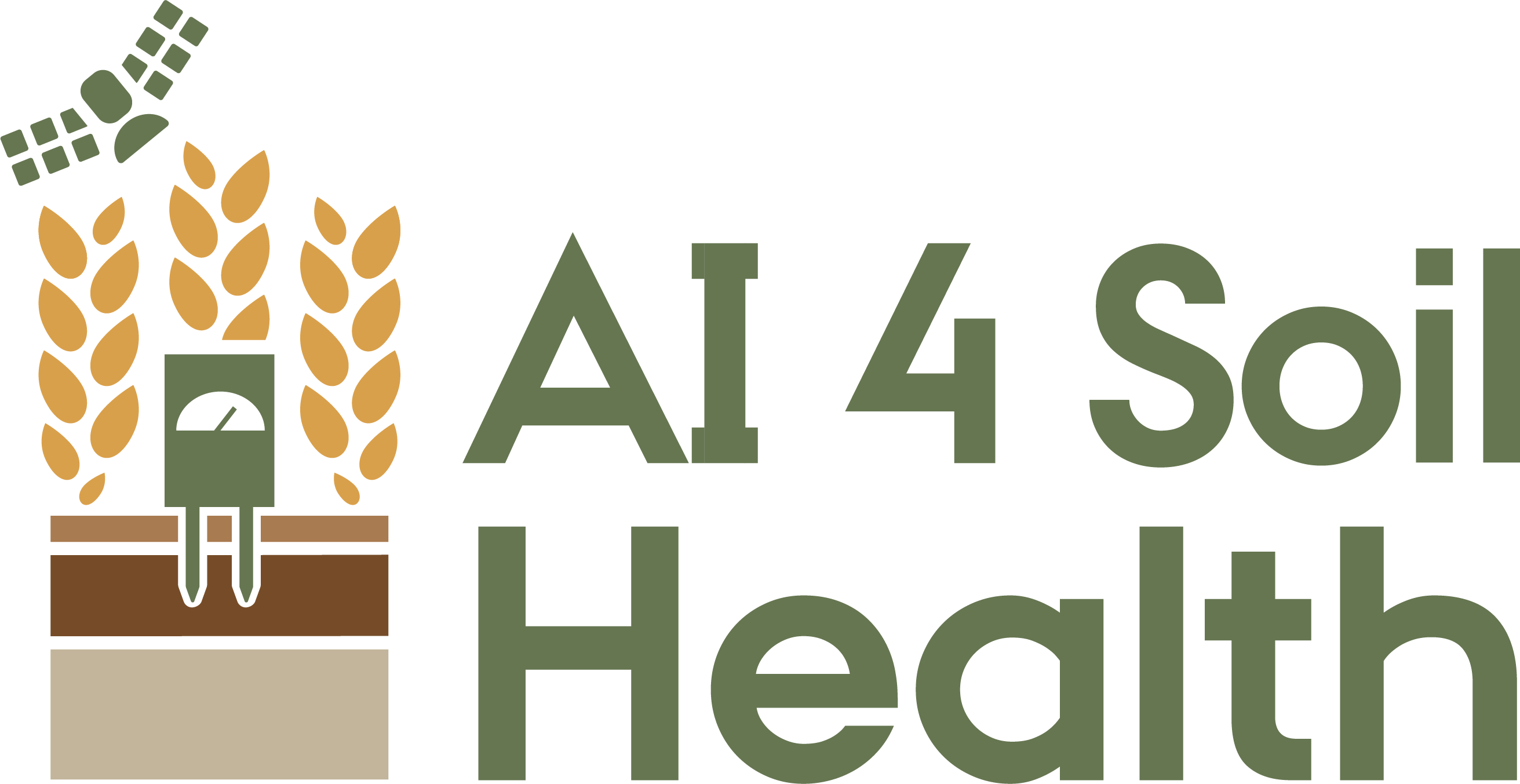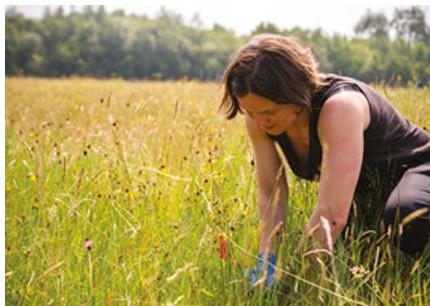For anyone involved in agriculture or land management, understanding the health and composition of soil is paramount. Traditionally, this has meant sending soil samples to laboratories, a process that can be slow, costly, and resource-intensive. But what if you could gain deep insights into your soil in minutes, right there in the field?
This is where soil spectroscopy comes in, a revolutionary technology that is set to transform how we approach soil health and sustainable agriculture. In this blog, Kostas Karyotis from Aristotle University of Thessaloniki unpacks soil spectroscopy and explores it’s potential as a novel tool for understanding soil.
What is soil spectroscopy?

Kostas testing a spectrometer in the field in Greece. Photo credit: Konstantinos Tsakalidis
At its core, soil spectroscopy is about analysing how light interacts with soil. This technique involves sending a beam of light, typically in the visible or near-infrared spectrum, onto a soil sample and measuring what bounces back. Different components within the soil, such as organic matter, clay minerals, and moisture, absorb or reflect light in unique ways.
The result is a spectral curve with distinctive peaks and valleys. These patterns are like a fingerprint for the soil, and with the power of machine learning, these spectral fingerprints can be translated into estimates of crucial soil properties like organic carbon content, pH, and nutrient levels. For this to work effectively, machine learning models need to be trained on large, high-quality datasets that establish known relationships between spectral patterns and soil properties.
Soil spectroscopy can give powerful soil health assessments in field without a lab
Recent advancements in soil spectroscopy have significantly improved both the accuracy and accessibility of spectral data of high quality. The ability of machine learning to analyse vast amounts of data has enhanced the precision of these analyses. Crucially, the development of low-cost, portable devices and open-source tools is democratising access to this technology. This means that high-resolution soil data is no longer confined to specialised labs, empowering farmers, agronomists, and land managers with better information for sustainable land management.
Moving soil spectroscopy from controlled laboratory settings to the dynamic environment of the field presents unique challenges. In a lab, conditions like moisture, lighting, and sample preparation are meticulously controlled, ensuring clean and consistent data. However, in the field, factors such as soil moisture, surface roughness, shadows, inconsistent light, dust, and plant residues can all interfere with measurements.
The key challenge is developing models that can perform reliably despite this variability. But within this challenge lies the greatest opportunity. If these tools can be made robust enough for field use, we move beyond infrequent soil data collection to real-time, on-the-ground monitoring. Imagine being able to scan your soil with a handheld device or even your phone and instantly receive insights into its fertility or carbon content. This shifts soil diagnostics from a distant, lab-based process to on-demand, partial soil intelligence.
Direct benefits of soil spectroscopy for farmers and land managers
The practical applications of soil spectroscopy for those working directly with the land are immense. Its biggest advantage is its speed and non-destructive nature. Instead of waiting weeks for lab results, a farmer can get an indication of soil organic matter in minutes or seconds. This also reduces the environmental impact associated with traditional chemical analyses, as samples don’t need to be transported and often aren’t returned to the soil.
Examples of the benefits of using soil spectroscopy
- Efficient fertiliser application: A farmer can use a portable spectrometer to scan multiple points across a field, identifying areas low in organic matter. This allows for targeted fertiliser application, reducing waste and ensuring inputs are used where they are most needed.
- Informed land restoration: Land managers working on restoring degraded areas can use spectroscopy to gather up-to-date, spatially detailed information. This enables them to make smarter decisions about where to intervene first and effectively monitor progress over time, rather than relying on outdated soil maps.
Relevance for Greece and beyond
For countries like Greece, where agricultural labour is often in rural areas far from major cities, the benefits are particularly acute. Farmers currently face high costs and long waiting times for laboratory results due to the logistics of transporting samples. Spectroscopy provides an instant, in-field measurement solution.
While it’s important to remember that spectroscopy is not a standalone solution—it’s an extension of laboratory analysis—it can significantly reduce the number of soil samples requiring traditional chemical analysis. This makes regular soil monitoring more feasible and accessible for farmers, ultimately leading to more informed and sustainable agricultural practices.
Strengthening EU soil measurement strategies using spectroscopy
Soil spectroscopy is poised to be a game-changer for EU member states in implementing more effective soil measurement strategies. With ongoing discussions about soil monitoring frameworks and the definition of soil districts, there’s a clear need for standardised methodologies. Traditionally, soil data collection has been slow, expensive, and fragmented due to different countries using varying methods.
Spectroscopy offers a solution by enabling the use of uniform protocols across the EU. Projects like AI for Soil Health are actively supporting the development of these standardised protocols, with various laboratories collaborating in this effort. This will lead to consolidated, high-quality datasets, providing a more accurate and comprehensive picture of soil health across the continent.

The Greek pilot site creating a protocol to use around spectroscopy. Photo credit: Konstantinos Tsakalidis
Soil spectroscopy in summary
The potential of soil spectroscopy to revolutionise agriculture is undeniable. By providing rapid, non-destructive, and increasingly accessible insights into soil health, it empowers those on the front lines of food production and land management with the information they need to make smarter, more sustainable decisions.
Kostas Karyotis is a scientific associate at the Laboratory of Remote Sensing, Spectroscopy and GIS of Aristotle University of Thessaloniki.


